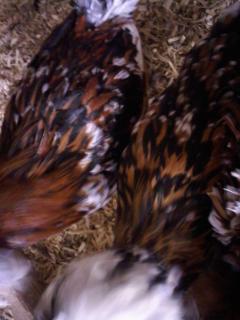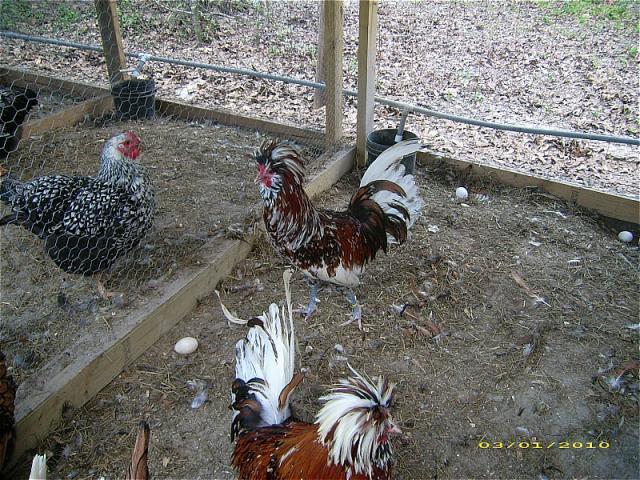They look like a herd of calico-colored chickens, that's what they look like!
I just love them.
(sorry, crappy cell phone pic alert. I am having computer trouble & can't get pics off my SD card from my "real" camera
)
Close-up of the feather coloration (keep in mind that these birds are juveniles, and the patterns will become more defined when they molt into their adult plumage):
But here's one (of several) issues with the variety--the bird pictured above will likely look like this in a couple of years:
They lighten considerably with every molt. The picture above of the bird with all of the white looked like the others 'till she was about 18 months old--she is about 3 years old now, and just gets lighter and lighter. She has nearly no black left in any of her feathers, and the white tips, as you can see, are overtaking entire feathers. Feather color/pattern is just one frustrating issue with these birds. There seems to be almost no genetic diversity & it's very hard to find breeding stock, obviously. I have had problems like failure to thrive in chicks/youngsters, broken/crooked toes, and unexplained deaths in seemingly healthy young birds (this is always roosters, too, strangely--and another breeder I have spoken to says she has had the same problem. Maybe some weird sex-linked genetic defect?). I really, really love them, but they are not easy.
I think the gold laced in Gretchen's flock is a recent addition (& I think it's just one bird). We'll have to get her to join the conversation, but I believe her stock originated with strictly Tolbunt birds (meaning, she didn't create them, she started with Tolbunt).
I was told by a long-time (relatively, anyway) breeder
not to cross back to gold laced, but I also don't see where it is logical to do anything else (unless you are going to start over from scratch). The variety is in real need of some fresh genes in the pool.


















